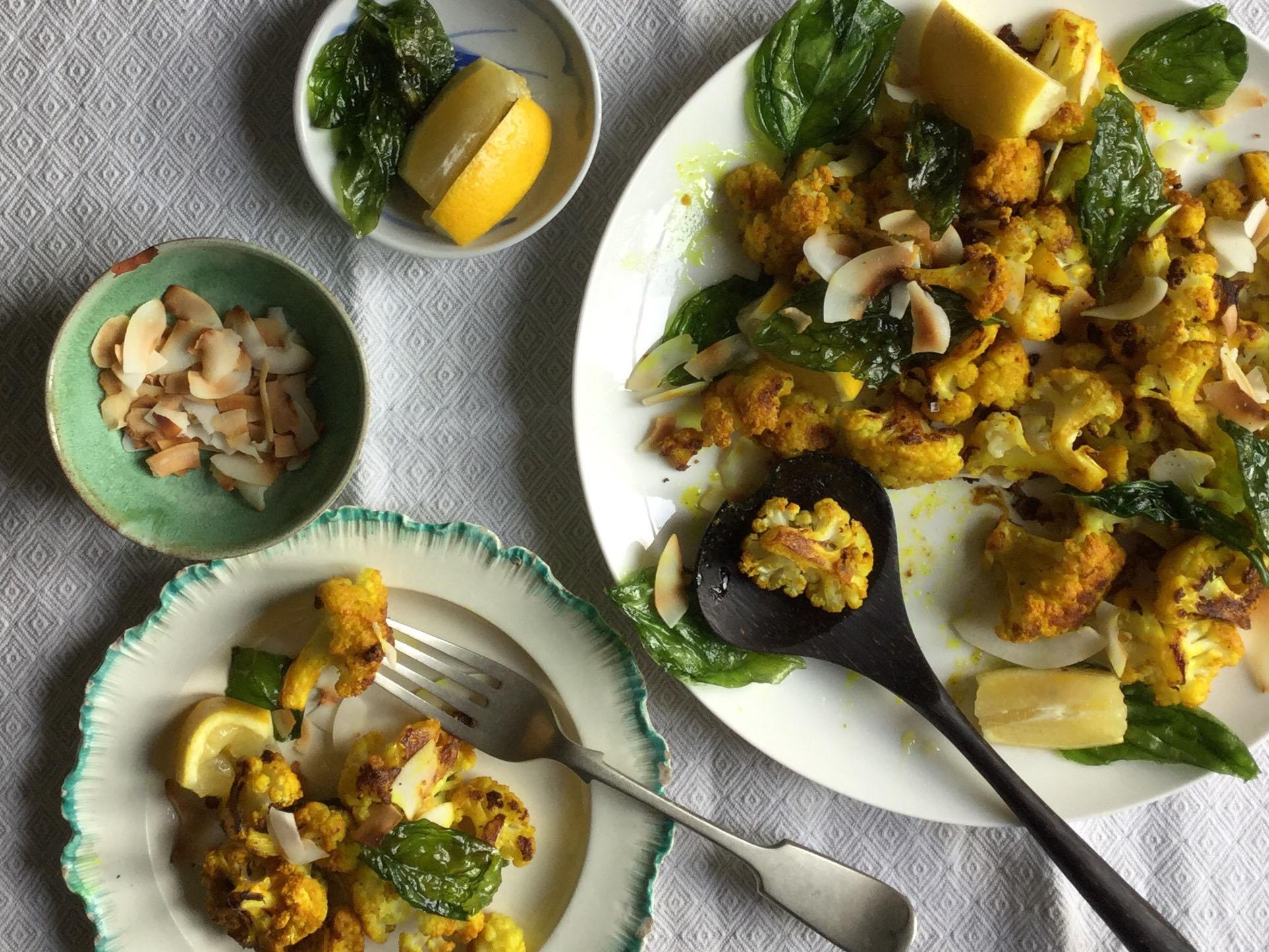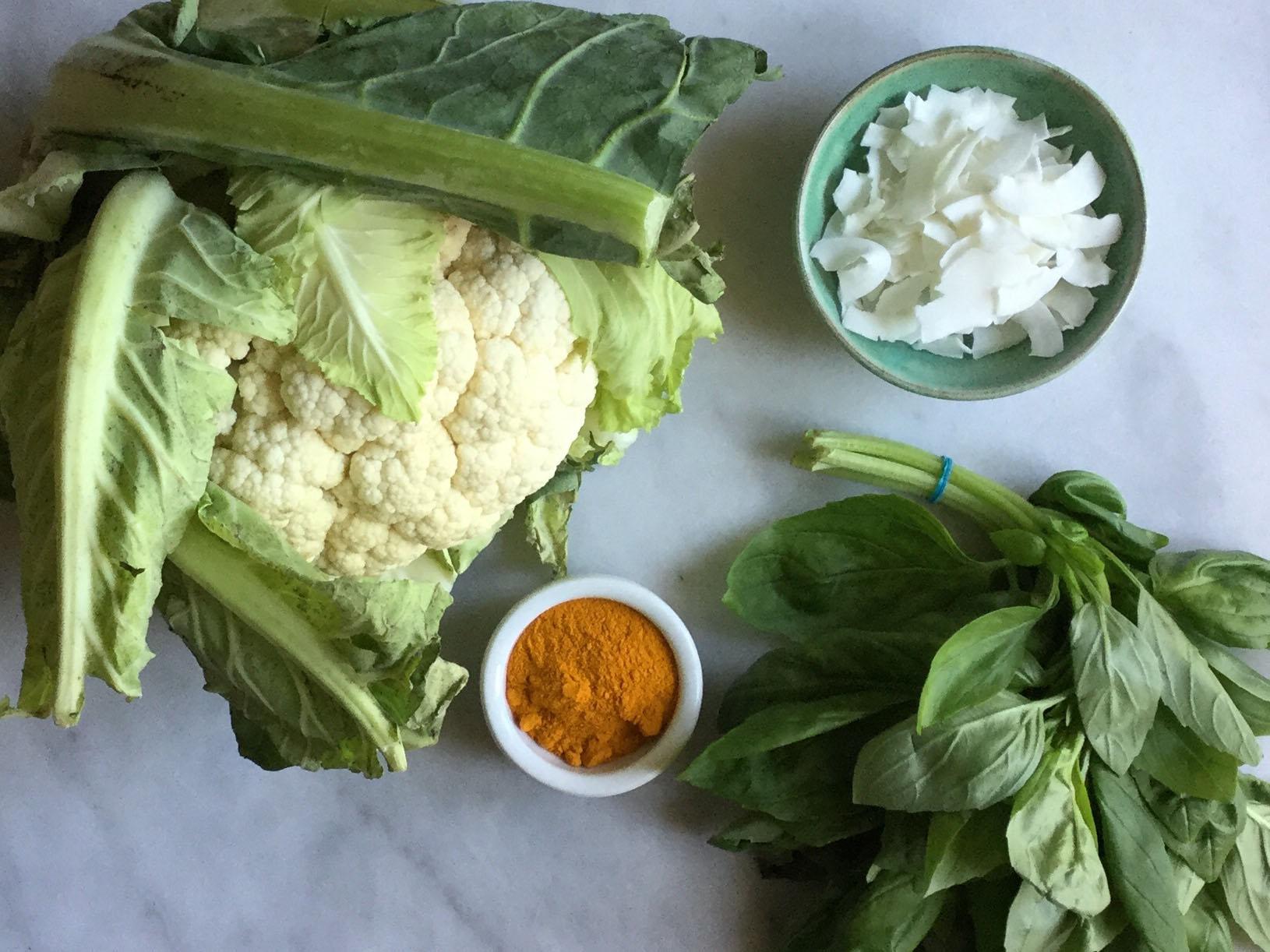How to make turmeric roasted cauliflower with fried basil leaves and toasted coconut
With an injection of colour, Julia Platt Leonard whips up a recipe that looks as good as its tastes to help you serve up a positive glow on your plate

We eat with more than our mouths. Cooking – and eating – involve all our senses. It’s the spitting and sputtering sound basil leaves make when you toss them into hot oil.
Or the smell – musky and earthy – of cumin when you toast it. It’s the firm feel of a piece of pasta pulled out of a pot of boiling water that tells you it needs another minute, without even tasting it.
And it’s the way food looks when it arrives at the table. Before we even take a bite, our eyes are sending signals to the brain to let it know what’s going on.
The message could be cautious (perhaps it tastes better than it looks?), bleak (should have gotten a takeaway) or beaming (I hope there’s more).
As winds rage, rain pours and winter drags its feet, we need food that looks as good as it tastes. We crave colour. We want something that brightens our plates and awakens our taste buds.
You couldn’t ask for anything brighter than turmeric – it’s positively day glow on a plate.
Paired with fried basil leaves (like transparent bits of stained glass) and some toasted coconut and you’re sending your mouth all the right messages.

Turmeric roasted cauliflower with fried basil leaves & toasted coconut
The key to frying the basil leaves is to make sure they’re scrupulously dry before frying. Even then, their high water content means oil will splatter as soon as they hit the pan. Use long tongs if you have them or a splatter guard. They take less than a minute to cook so be ready to gently remove them onto towel paper to drain. They’re fragile but even if broken still taste delightful.
Serves 4
1 head cauliflower
2-3 Tbsp olive oil
1 tsp turmeric
1 small handful of basil leaves
20g coconut flakes
Vegetable oil
Salt and pepper
1 lemon, cut into wedges
Preheat the oven to 220 °C.
Wash the cauliflower and cut into florets. Place on a baking pan and toss with the olive oil, turmeric and salt and freshly ground pepper. Place into the oven and roast, turning occasionally until the cauliflower is nicely browned. If the cauliflower looks dry, give it an extra drizzle of oil.
While the cauliflower is roasting, wash and dry the basil leaves.
Heat a small frying pan over medium-high heat and toast the coconut for a minute or two until lightly browned. Watch it like a hawk as it can burn very quickly. Remove and set aside.
Pour vegetable oil into the pan to cover the bottom generously. When it’s heated, add the basil leaves, a few at a time. They will sputter and hiss so use long tongs or a splatter guard to protect yourself.
Turn the leaves gently, fry a bit more and then remove and place on towel paper. Repeat until all the leaves are fried. Sprinkle with a bit of sea salt.
When the cauliflower is roasted, remove from the oven and place on a serving dish. Give it a generous squirt of lemon juice and place the remaining wedges on the dish. Garnish with the coconut and basil leaves.
Join our commenting forum
Join thought-provoking conversations, follow other Independent readers and see their replies
Comments